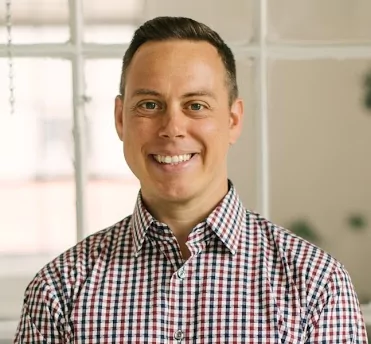Job Task Analysis (JTA) is a formal process to define what is being done in a profession, especially what is most important or frequent, and then using this information to make data-driven decisions. It is an essential step in designing a test to be used in the workforce, such as pre-employment or certification/licensure, by analyzing data on what is actually being done in the job so that they test blueprints cover what is most important and frequent.
Also known as Job Analysis or Role Delineation, job task analysis is important to design a test that is legally defensible and eligible for accreditation. It usually involves a panel of subject matter experts to develop a survey, which you then deliver to professionals in your field to get quantitative data about what is most frequently done on the job and what is most critical/important. This data can then be used for several important purposes.
Need help? Our experts can help you efficiently produce a job task analysis study for your certification, guide the process of item writing and standard setting, then publish and deliver the exam on our secure platform.
Reasons to do a Job Task Analysis
Job analysis is extremely important in the field of industrial/organizational psychology, hence the meme here from @iopsychmemes. It’s not just limited to credentialing.

Exam design
The most common reason is to get quantitative data that will help you design an exam. By knowing what knowledge, skills, abilities, or other (KSAOs), are most commonly used, you then know which deserve more questions on the test. It can also help you with more complex design aspects, such as defining a practical exam with live patients.
Training curriculum
Similarly, that quantitative info can help design a curriculum and other training materials. You will have data on what is most important or frequent.
Compensation analysis
You have a captive audience with the JTA survey. Ask them other things that you want to know! This is an excellent time to gather information about compensation. I worked on a JTA in the past which asked about work location: clinic, hospital, private practice, or vendor/corporate.
Job descriptions
A good job analysis will help you write a job description for postings. It will tell you the job responsibilities (common tasks), qualifications (required skills, abilities, and education), and other important aspects. If you gather compensation data in the survey, that can be used to define the salary range of the open position.
Workforce planning
Important trends might become obvious when analyzing the data. Are fewer people entering your profession, perhaps specific to a certain region or demographic? Are they entering without certain skills? Are there certain universities or training programs that are not performing well? A JTA can help you discover such issues and then work with stakeholders to address them. These are major potential problems for the profession.
IT IS MANDATORY
If you have a professional certification exam and want to get it accredited by a board such as NCCA or ANSI/ANAB/ISO, then you are REQUIRED to do some sort of job task analysis.
Why is a JTA so important for certification and licensure? Validity.
The fundamental goal of psychometrics is validity, which is evidence that the interpretations we make from scores are actually true. In the case of certification and licensure exams, we are interpreting that someone who passes the test is qualified to work in that job role. So, the first thing we need to do is define exactly what is the job role, and to do it in a quantitative, scientific way. You can’t just have someone sit down in their basement and write up 17 bullet points as the exam blueprint. That is a lawsuit waiting to happen.
There are other aspects that are essential as well, such as item writer training and standard setting studies.
The Methodology: Job Task Inventory
It’s not easy to develop a defensible certification exam, but the process of job task analysis (JTA) doesn’t require a Ph.D. in Psychometrics to understand. Here’s an overview of what to expect.
- Convene a panel of subject matter experts (SMEs), and provide a training on the JTA process.
- The SMEs then discuss the role of the certification in the profession, and establish high-level topics (domains) that the certification test should cover. Usually, there is 5-20. Sometimes there are subdomains, and occasionally sub-subdomains.
- The SME panel generates a list of job tasks that are assigned to domains; the list is reviewed for duplicates and other potential issues. These tasks have an action verb, a subject, and sometimes a qualifier. Examples: “Calibrate the lensometer,” “Take out the trash”, “Perform an equating study.” There is a specific approach to help with the generation, called the critical incident technique. With this, you ask the SMEs to describe a critical incident that happened on the job and what skills or knowledge led to success by the professional. While this might not generate ideas for frequent yet simple tasks, it can help generate ideas for tasks that are rarer but very important.
- The final list is used to generate a survey, which is sent to a representative sample of professionals that actually work in the role. The respondents take the survey, whereby they rate each task, usually on its importance and time spent (sometimes called criticality and frequency). Demographics are also gathered, which include age range, geographic region, work location (e.g., clinic vs hospital if medical), years of experience, educational level, and additional certifications.
- A psychometrician analyzes the results and creates a formal report, which is essential for validity documentation. This report is sometimes considered confidential, sometimes published on the organization’s website for the benefit of the profession, and sometimes published in an abbreviated form. It’s up to you. For example, this site presents the final results, but then asks you to submit your email address for the full report.
Using JTA results to create test blueprints
Many corporations do a job analysis purely for in-house purposes, such as job descriptions and compensation. This becomes important for large corporations where you might have thousands of people in the same job; it needs to be well-defined, with good training and appropriate compensation.
If you work for a credentialing organization (typically a non-profit, but sometimes the Training arm of a corporation… for example, Amazon Web Services has a division dedicated to certification exams, you will need to analyze the results of the JTA to develop exam blueprints. We will discuss this process in more detail in another blog post. But below is an example of how this will look, and here is a free spreadsheet to perform the calculations: Job Task Analysis to Test Blueprints.
Job Task Analysis Example
Suppose you are an expert widgetmaker in charge of the widgetmaker certification exam. You hire a psychometrician to guide the organization through the test development process. The psychometrician would start by holding a webinar or in-person meeting for a panel of SMEs to define the role and generate a list of tasks. The group comes up with a list of 20 tasks, sorted into 4 content domains. These are listed in a survey to current widgetmakers, who rate them on importance and frequency. The psychometrician analyzes the data and presents a table like you see below.
We can see here that Task 14 is the most frequent, while Task 2 is the least frequent. Task 7 is the most important while Task 17 is the least. When you combine Importance and Frequency either by adding or multiplying, you get the weights on the right-hand columns. If we sum these and divide by the total, we get the suggested blueprints in the green cells.


Nathan Thompson earned his PhD in Psychometrics from the University of Minnesota, with a focus on computerized adaptive testing. His undergraduate degree was from Luther College with a triple major of Mathematics, Psychology, and Latin. He is primarily interested in the use of AI and software automation to augment and replace the work done by psychometricians, which has provided extensive experience in software design and programming. Dr. Thompson has published over 100 journal articles and conference presentations, but his favorite remains https://scholarworks.umass.edu/pare/vol16/iss1/1/ .

